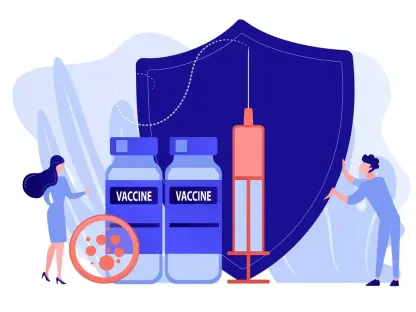Osun State, Nigeria, faces significant infrastructural deficits across its local governments, hindering its socioeconomic progress. These gaps affect essential services such as healthcare, education, transportation, power supply, water, sanitation, urban planning, and housing. This article delves into the multifaceted challenges and offers pragmatic solutions to spur transformative developments.
Education and Healthcare Infrastructure: Dual Pillars in Crisis
Deficiencies in Educational Facilities
In Osun State, from Atakunmosa East to Isokan, schools struggle with shortages of basic facilities. Classrooms are overcrowded, lacking essential equipment such as desks and teaching aids, resulting in subpar learning experiences. The absence of conducive learning environments perpetuates low educational attainment, trapping generations in cycles of poverty. These limitations are evident in poor student performance and high dropout rates, as children face an environment that discourages engagement and academic excellence.
The challenges of educational infrastructure are not confined to physical buildings alone. In many local governments, digital infrastructure is almost non-existent. Students do not have access to computers or the internet, which are essential for modern education. This digital divide leaves students in Osun State at a significant disadvantage, particularly in a world where technology plays an increasingly critical role in every field. The lack of technological resources prevents students from acquiring essential skills, further widening the gap between them and their peers in better-equipped regions.
Healthcare Workers Shortage
Healthcare infrastructure also faces significant hurdles. Local governments like Ayedire and Ifedayo are plagued by a dire lack of medical personnel. This shortage results in overwhelmed facilities, contributing to higher mortality rates and the prevalence of preventable diseases. Long wait times and insufficient medical attention are common, severely impacting overall health outcomes. The scarcity of healthcare professionals means that many people go untreated or receive inadequate care, exacerbating health crises and diminishing the quality of life across these localities.
To make matters worse, the facilities that do exist are often under-equipped. Essential medical equipment is either outdated or altogether missing, which hampers the ability of healthcare workers to provide adequate care. For example, the absence of diagnostic tools such as X-ray machines and blood testing kits makes it difficult to diagnose and treat patients accurately. These deficits make healthcare delivery inefficient and ineffective, prolonging illnesses and increasing the community’s vulnerability to health threats.
Transportation Hurdles: Roads to Nowhere
Inadequate Transportation Networks
The transportation infrastructure in Osun State is in dire need of attention. Poor road networks from Ayedaade to Ejigbo restrict access to markets, healthcare, and schools. In rural areas, the situation is even bleaker, isolating communities and drastically curtailing economic opportunities. Bad roads not only make travel difficult but also increase the wear and tear on vehicles, resulting in higher maintenance costs and transportation fees, which further stifles local economies by making goods and services more expensive.
Additionally, public transportation options are scarce and unreliable, compounding the problem for residents who depend on these services to commute for work and other essential activities. The lack of efficient public transportation limits mobility and exacerbates social isolation. This situation is particularly acute for the elderly and disabled, who rely on accessible and reliable transport for their daily needs. Improving public transportation could be a game-changer, offering a lifeline to isolated communities while stimulating economic activities by connecting people with markets and job opportunities.
Economic Impacts of Poor Roads
Unimproved roads not only isolate communities but also increase the cost of transportation, making it prohibitively expensive for many. This limits access to essential services and restricts local businesses’ market reach, stymieing economic development and amplifying rural poverty. Farmers, for instance, struggle to get their produce to markets efficiently, leading to post-harvest losses and reduced incomes. Consequently, the economic viability of agrarian communities is significantly compromised, affecting food security and overall economic stability.
Furthermore, poor road conditions deter potential investors who might otherwise contribute to local economic development. Companies are hesitant to establish operations in areas with inadequate infrastructure, fearing logistical difficulties and increased operational costs. This investment gap hinders job creation and economic growth, perpetuating a cycle of underdevelopment. Improving road infrastructure is thus critical not only for enhancing mobility but also for attracting investment and fostering economic resilience in Osun State.
Power Challenges: A State in Darkness
Impact on Economic Activities
Frequent power outages across Osun State severely disrupt economic activities. Inconsistent electricity supplies affect industrial productivity, forcing small businesses to rely on costly alternatives like generators. This increases their operating costs, thus reducing profitability and economic competitiveness. Small-scale industries find it particularly challenging to sustain operations, as the cost of fuel for generators significantly eats into their profit margins, rendering them less competitive in the market.
Moreover, the unreliability of the power supply discourages new businesses from setting up shop in the region, further stifling economic development. Entrepreneurs are hesitant to invest in areas where they cannot depend on a stable electricity supply, thereby limiting job creation and economic diversification. The inconsistency in power provision stymies innovation and constrains the growth of sectors that are highly dependent on continuous power, such as manufacturing and service industries.
Health and Educational Consequences
Power outages also significantly impact healthcare and educational services. Medical facilities often operate below capacity due to unreliable electricity, compromising the quality of care. Similarly, schools face interruptions, hampering learning and reducing students’ academic performance. Essential medical devices, such as incubators and ventilators, become inoperable during power cuts, posing serious risks to patients’ lives. In schools, the lack of electricity disrupts lesson plans and limits teachers’ ability to use modern teaching aids, leaving students at a critical disadvantage.
The situation is particularly severe in rural areas where alternative power sources are less accessible. These power disruptions exacerbate existing challenges and prevent healthcare and educational facilities from delivering essential services effectively. Without a stable power supply, even the best-intentioned reforms in these sectors will fall short of their goals. Addressing power supply issues is therefore paramount for improving health and education outcomes and, by extension, overall quality of life.
Water and Sanitation: A Public Health Crisis
Water Scarcity Issues
Local governments such as Ayedaade and Ife South are battling severe water shortages. The scarcity of clean water threatens public health, leading to widespread illnesses. People spend numerous hours fetching water, time that could be used productively elsewhere, further hampering development. The scarcity not only poses a direct public health risk but also undermines daily activities such as cooking, cleaning, and personal hygiene. In schools, the lack of water disrupts basic sanitation, affecting attendance and educational outcomes.
Additionally, the quality of the available water is often substandard. In many communities, water sources are contaminated, contributing to the spread of waterborne diseases like cholera and dysentery. This situation is particularly dire in rural areas where water-treatment facilities are scarce or non-existent. Addressing the water scarcity issue requires a multi-faceted approach, focusing on improving both the availability and quality of water to ensure the well-being of Osun State’s residents.
Poor Sanitation Infrastructure
Compounding the water crisis is inadequate sanitation infrastructure. Regions like Irewole and Ayedire face significant public health risks due to poor waste management. Insufficient sanitation facilities lead to improper waste disposal, heightening the spread of diseases and affecting community well-being. Open defecation is common in many areas, further exacerbating health risks. The lack of proper sanitation facilities infringes on human dignity and poses severe health risks, particularly to women and children who are more vulnerable to sanitation-related diseases.
Improper waste management techniques contribute to environmental degradation, affecting not just human health but also the ecosystem. Rivers and other water bodies become polluted, adversely impacting agriculture and fishing, which are critical to local livelihoods. Developing sustainable waste management systems is crucial for mitigating these risks. Such systems would involve not only the construction of sanitation facilities but also community education on proper waste disposal practices, contributing to a healthier and more sustainable living environment.
Urban Planning and Housing: Struggles of Rapid Urbanization
Overcrowding and Urban Decay
Rapid urbanization has overwhelmed local governments like Ilesa West and Ede North. Overcrowding, poorly maintained roads, and housing shortages are rampant. These issues contribute to urban decay, making living conditions harsh and impeding efforts to create livable, cohesive communities. The influx of people in search of better opportunities has outpaced the capacity of these areas to provide adequate housing and infrastructure, resulting in informal settlements with substandard living conditions.
Moreover, the lack of adequate urban planning exacerbates these issues. Without well-thought-out plans for expansion, cities become disorganized, leading to traffic congestion, environmental degradation, and deteriorating public services. This urban chaos adversely affects residents’ quality of life and poses significant challenges for governance. Implementing comprehensive urban renewal projects that focus on sustainable and inclusive development can help mitigate these issues, ensuring that cities remain viable and vibrant places to live.
Flooding and Waste Management
Inadequate urban planning exacerbates existing challenges. For instance, Olurunda faces frequent flooding due to poor drainage systems. Without proper waste disposal systems, these conditions worsen public health risks, highlighting the need for comprehensive urban renewal projects focusing on waste management and infrastructure modernization. Frequent flooding damages properties and disrupts daily life, adding to the economic and social burden on residents. Effective drainage systems can mitigate these risks, protecting both property and public health.
Poor waste management further compounds the problem, as blocked drainage channels contribute to flooding. This situation creates a vicious cycle where flooding leads to more waste, which then exacerbates flooding. Addressing this requires a holistic approach that combines infrastructure development with community participation in waste management. Investments in modern waste disposal and drainage systems, supported by robust urban planning, are essential to solve these intertwined challenges. Ensuring that cities can cope with rapid urbanization will significantly improve the living conditions and future prospects for residents.
A Call for Multi-Sectoral Solutions
Healthcare and Education Initiatives
Addressing these infrastructural challenges requires targeted actions. Building new schools and healthcare facilities in underserved areas and recruiting more healthcare workers and teachers can significantly improve service delivery. Enhanced training programs can ensure higher service standards, boosting both health and education outcomes. Additionally, incentivizing professionals to work in rural areas through better salaries and benefits could help alleviate the acute manpower shortages that currently plague these sectors.
Importantly, the approach to solving these issues must be holistic. While physical infrastructure is vital, equally crucial is the development of sustainable programs that focus on long-term improvements. Community involvement in planning and implementation can ensure that interventions are tailored to local needs, making them more effective and sustainable. Collaborations between the government, non-government organizations, and the private sector can drive these initiatives, pooling resources and expertise to maximize impact.
Investing in Transportation and Power
Strategic investments in transportation are crucial. Road rehabilitation and expansion, particularly in rural areas, will improve access to essential services and stimulate economic activity. Furthermore, power sector reforms are necessary. Expanding electricity generation and modernizing infrastructure can ensure reliable power, vital for businesses, healthcare, and education. Using renewable energy sources such as solar and wind can offer sustainable solutions to the power crisis while reducing the environmental impact of energy production.
Investing in transportation infrastructure can have immediate and long-term benefits. Improved roads reduce travel time and costs, enhancing trade and access to marketplaces. Reliable transportation opens up rural areas to economic opportunities, reducing poverty and improving quality of life. The transformation in power and transportation can create an enabling environment for business growth and public welfare improvements, contributing significantly to the overall development of Osun State.
Water, Sanitation, and Urban Planning Projects
Osun State in Nigeria struggles with considerable infrastructure deficiencies within its local governments, severely hampering its socioeconomic development. These shortcomings impact critical services, including healthcare, education, transportation, power supply, water, sanitation, urban planning, and housing. The lack of adequate infrastructure in these areas not only stifles economic growth but also affects the quality of life for the residents. Poor healthcare facilities lead to inadequate medical care, while limited educational resources hinder learning opportunities. Inadequate transportation networks make commuting difficult, restricting access to jobs and markets. Unreliable power supply and water scarcity create daily hardships. Poor sanitation and insufficient urban planning contribute to unhealthy living conditions. This article explores these complex issues in depth and suggests practical solutions aimed at driving substantial, positive change. By addressing these multifaceted challenges with strategic planning and investment, Osun State can pave the way for a brighter, more prosperous future.









